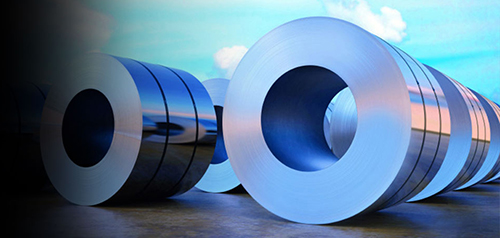Austenitic Stainless Steel Grades

Austenitic stainless steel grades are classified in the 200 and 300 series, with 16% to 30% chromium and 2% to 20% nickel for enhanced surface quality, formability, increased corrosion and wear resistance. Austenitic stainless steel grades are non-hardenable by heat treating. These steels are the most popular grades of stainless produced due to their excellent formability and corrosion resistance. All austenitic steels are nonmagnetic in the annealed condition. Depending on the composition, some austenitics do become somewhat magnetic when cold worked. Austenitics are used for automotive trim, cookware, food and beverage equipment, processing equipment, and a variety of industrial applications.
Product Applications
Appliance, Architectural, Cookware
Product Details
Corrosion Resistance
Corrosion resistance in stainless steels is primarily determined by chromium content. Austenitic stainless steels, as a class, have excellent corrosion resistance and those with molybdenum additions have improved pitting resistance. The nickel content in austenitic stainless steels helps to reduce the rate of corrosion, particularly in acid environments. Austenitic grades, however, are susceptible to chloride stress corrosion cracking (SCC) and are not recommended for service that combines tensile stress and the presence of chlorides, even at moderate temperatures. Higher carbon austenitic grades can be susceptible to intergranular corrosion after certain high temperature exposures, including welding. For applications that require welding, a post-weld heat treatment or selection of a low carbon or stabilized grade such as Type 304L, 316L and 321, is recommended.
Formability
Austenitic stainless steel grades are generally considered to have excellent formability. Lean austenitic grades, including NITRONIC 30, Type 201, and Type 301, have high work hardening rates and resistance to thinning which results in improved stretch formability. For deep drawing, it is generally advised to use higher nickel content, lower work hardening grades such as Types 304 or 305.
Weldability
Austenitic stainless steel grades exhibit similar welding characteristics. These alloys can be joined by shielded fusion and resistance welding processes. Good mechanical strength is developed in welded joints without the necessity of preheating or post-weld annealing. Heat treatment or alternative selection of a low-carbon grade is advised to prevent corrosion in the weld area. The physical properties of austenitic stainless steels must be taken into consideration when developing appropriate welding practices.
Strength at Temperature
In service conditions with extreme temperatures, either cryogenic or elevated, austenitic stainless steels are well suited. Some austenitic grades retain good ductility and impact strength at sub-zero temperatures. These alloys also maintain tensile and creep strength at elevated temperatures.
Tensilized Austenitic Stainless Steel
Some austenitic stainless steel grades have high work hardening rates. In these steels the austenite is not stable and will partially transform to martensite when cold worked. This property is used to great advantage in structural applications that require high strength and hardness. We produce cold-worked austenitic stainless steels in a number of industry standard strength levels (1/4-hard, 1/2-hard, full hard, etc).